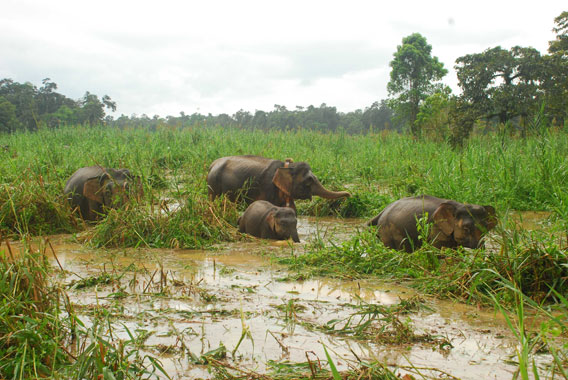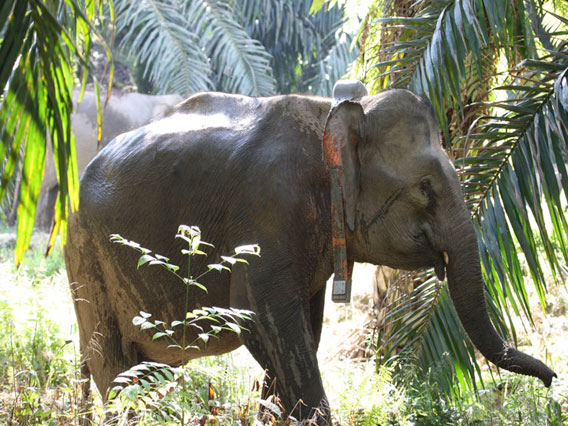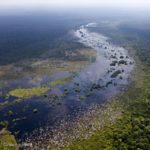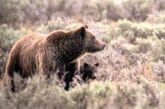Forest fragmentation and destruction imperils survival of the Bornean elephant (Elephas maximus borneensis), according to a new paper published in PLoS ONE. Using satellite collars to track the pachyderms for the first time in the Malaysian state of Sabah, scientists found elephants sensitive to habitat fragmentation from palm oil plantations and logging.


What a Bornean Elephant Wants: More Protected Forests and Wildlife Corridors
Adapted from an article by Jeremy Hance in Mongabay.com
The history of the Bornean elephant is controversial. Dubbed “pygmy” for its relatively small size compared to the mainland Asian elephant, recent DNA analysis found them a genetically distinct subspecies of the latter having evolved independently on the island for around 300,000 years. Some consider them a remnant population of the now extinct Javan elephant. Formerly, people believed the population descended from captive elephants presented to the Sultan of Sulu in 1750 by the East-India Company and later set free in northern Borneo. Around 1,500 to 2,000 Bornean elephants remain in Sabah and the Indonesian state of Kalimantan.
Home Ranging Behavior
The Asian elephant inhabits many types of habitat throughout its range, including closed canopy tropical rainforest in Peninsular Malaysia, Sumatra and Borneo. These three land masses were part of Sundaland, an extension of the continental shelf of South-East Asia, most of which now lies under the South China Sea [1]. In recent decades, commercial logging of the forests was followed by large-scale conversion of logged forests to agriculture and by the establishment of settlements in these three parts of Sundaland. As a result, the available elephant habitat was reduced, forcing a large percentage of these animals to migrate to other areas with a change in their feeding behavior since the natural habitat was affected and the food supply was depleted.
“Once the key forest habitat for elephants is cleared, and the availability of the food plants and water sources altered, elephants are forced to expand and shift their ranges in the search for resources to meet their needs,” the authors write, noting that any habitat smaller than 310 square miles (500 square kilometers) may be unable to support an elephant population over the long-term. The more fragmented a habitat, the further the elephant herds have to travel to find the resources they need. The research also found that the best habitat for Bornean elephants was lowland forests made up of dipterocarp trees.
See a short video of the Bornean Elephant


Conservation Recommendations
“We would highlight two recommendations to ensure the long-term conservation of the Bornean elephant: all remaining lowland dipterocarp forests which support elephants should be retained under natural forest management and must not be converted to plantations; and forest disturbance needs to be minimized wherever wild elephants occur. In timber production forests, this can be achieved by limiting the extent and frequency of logging operations in any given management compartment,” said co-author Benoit Goossens, Director of Danau Girang Field Center and a senior research associate at Cardiff University, in a press release.
The findings have already impacted logging operations in Sabah, according to co-author Laurentius Ambu, director of the Sabah Wildlife Department.
“In Gunung Rara Forest Reserve (central Sabah), logging activities were carried out during the tracking period and elephants moved greater distances than in forests that were not being logged. We believe that the decision to stop logging activities in Ulu Segama-Malua Forest Reserves will have a positive impact on the elephant population there.”
Conservationists further hope to establish a wildlife corridor through palm oil plantations to connect herds in the Lower Kinabatangan River region to those in the Segaliud Lokan Forest Reserve.
“The elephants in Lower Kinabatangan were separated from Segaliud Lokan Forest Reserve for 25 years, due to habitat fragmentation and Borneo Conservation Trust (BCT) is in the process of getting the key oil palm plantation companies to support the initiative to set aside a corridor to connect the fragmented forest,” said lead author Raymond Alfred, head of research and conservation at BCT. “At the recent Sabah Wildlife Conservation Colloquium, the Minister of Plantation Industries and Commodities Tan Sri Bernard Dompok said that he wanted the Federal Government to help Sabah in the wildlife corridor initiative to link up pockets of forest land for wildlife survival and supported the idea of the Government acquiring land for the purpose.”
CITATION: Alfred R, Ahmad AH, Payne J, Williams C, Ambu LN, et al. (2012) Home Range and Ranging Behaviour of Bornean Elephant (Elephas maximus borneensis) Females. PLoS ONE 7(2): e31400. doi:10.1371/journal.pone.0031400













Pingback: An Orangutan's Journey Though Palm Oil Killing Fields | WilderUtopia.com
Pingback: Indonesia: Peat Swamp Protection Key to Climate | WilderUtopia.com
Pingback: Baram Dam: Protecting Wild Borneo, One Blockade at a Time